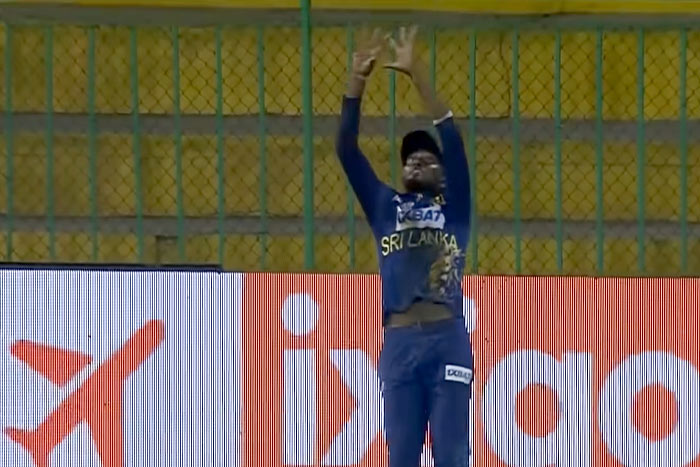Why the umpires were right to give ‘six’ despite fielder never touching ball and ground simultaneously

Sri Lanka’s Dushan Hemantha attempts to take a catch during the Asia Cup 2023 super four one-day international (ODI) cricket match between Sri Lanka and Bangladesh at the R. Premadasa Stadium in Colombo, on September 9, 2023.
The ending of the Sri Lanka-Bangladesh Asia Cup thriller threw up a Laws of Cricket puzzler, with six awarded despite the fielder in question never being contact with the ball and the ground at the same time.
The incident came with Bangladesh’s last-wicket pair at the crease, and 31 runs needed from the last 16 balls. No.8 Nasum Ahmed hit Maheesh Theekshana in the air down the ground, where Dushan Hemantha initially looked to have pulled off a brilliant piece of work, jumping and palming the ball back into the field.
However, after a long look at the replays, the TV umpire awarded six, much to the confusion of on-air commentators Roshan Abeysinghe and Dominic Cork.
“Why is it six?” asked Abeysinghe. “Just tell me, explain to me why it is six.”
“I can’t explain to you,” said Cork. “I don’t think that is six. He touches the boundary, but as he takes the catch, he’s not touching it. That’s a strange decision, because I thought that was pretty good fielding.”
Abeysinghe went on to describe it as “baffling”. “I don’t understand why this is a six unless we didn’t see something that the umpires saw. He’s up. I don’t think he’s touching the ropes at any time when he flicks the ball back.”
Cork went on to speculate that the moment could be “crucial”, but Sri Lanka wrapped up victory not long after. Still, as much as it is an odd situation, it is clear that the umpires made the right decision.
Law 19.5.2 reads: “A fielder who is not in contact with the ground is considered to be grounded beyond the boundary if his/her final contact with the ground, before his/her first contact with the ball after it has been delivered by the bowler, was not entirely within the boundary.”
Since Hemantha flicked the boundary rope with his boot as he jumped, his final contact with the ground before his first contact with the ball was not entirely within the boundary, and therefore ‘six’ was the right decision.
It is important to note that the first contact with the ball is the most crucial one. For any subsequent touches, it would have been sufficient for Hemantha to have been not in contact with the ball and the ground simultaneously.
(Source: Wisden)
Latest Headlines in Sri Lanka
- Sri Lanka President honors Navy, calls for unity in nation-building December 14, 2025
- Sri Lanka President pledges protection of fishermen’s rights amid Mannar crisis December 14, 2025
- Man arrested at Katunayake Airport with over 2 Kg of heroin December 14, 2025
- Sri Lankan President orders swift livelihood restoration for disaster-hit communities December 13, 2025
- Sri Lanka receives over USD 7 Billion in remittances in 2025 December 13, 2025


